Vi Hart, along with a group of experts from different political backgrounds and fields, proposes a plan for how we reopen:
-
People of the Pandemic is a game that lets you choose how many times you leave the house to get food or go for a walk. Using data for population and hospital beds in your ZIP code, the game then simulates infection, death, and recovery for a hypothetical virus, based on your choices and 19 others’ choices who played before you.
The infection rate felt aggressive no matter what choices I made in my ZIP code, so it’s probably worth emphasizing again that the game uses a simplified model. See the methodology here. But I like the effort to localize our individual decisions.
-
The daily counts for coronavirus deaths rely on reporting, testing, and available estimates, which means the numbers we see are probably lower than the real counts. So, for The New York Times, Jin Wu and Allison McCann plotted overall deaths against historical averages for a better sense of what’s really happening.
The contrasting red lines provide an obvious figure against the “would have died anyways” argument.
-
The coronavirus changed what information we search for. Has anyone been more interested in making masks or hand sanitizer in the history of the world? For The Washington Post, Alyssa Fowers compares search rankings for how, where, what, and how the week of April 5 to 11, for 2019 against 2020.
-
They say a watched pot never boils. So here’s a game where you try to make the pot boiling by looking somewhere else.
-
For many, sheltering in place means sheltering in relatively small places. Reuters zoomed in on the tight quarters in Tokyo, Japan. Not much room for movement.
-
Members Only
-
Manuel Lima hosted a free online panel with Michale Friendly and Sandra Rendgen historical data visualization. It already happened, but you can listen to the archived version:
Human beings have been involved in the visual representation of information for thousands of years. While some books on Data Visualization go as far back as the 18th century, to what’s considered to be the golden age of information graphics, the history of the practice is much deeper. The participants on this panel have spent years exploring key characters and major contributions to the field of Data Visualization over many centuries. We will be discussing ancient visual metaphors, the challenges of doing research in this area, what we can learn from the past, and many other topics.
-
How to Visualize Anomalies in Time Series Data in R, with ggplot
Quickly see what’s below and above average through the noise and seasonal trends.
-
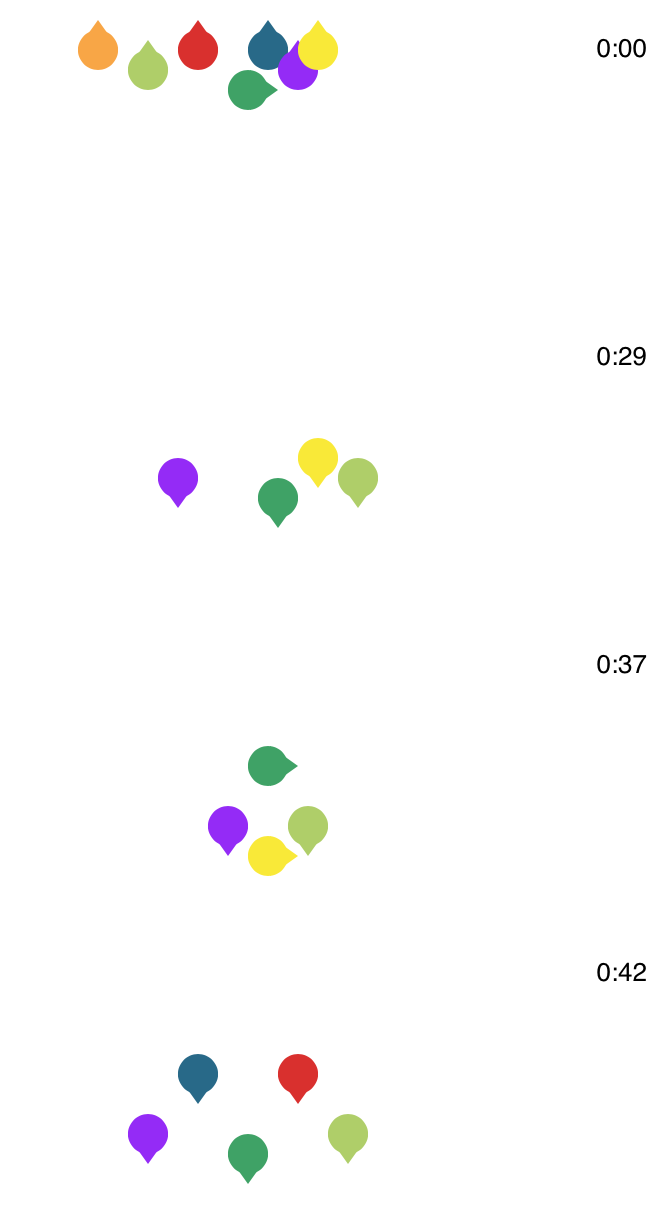 BTS, the South Korean boy band, is apparently really good at dancing. Ketchup Duck breaks down a routine into individual formations to show the precision:
BTS, the South Korean boy band, is apparently really good at dancing. Ketchup Duck breaks down a routine into individual formations to show the precision:There are a lot of impressive things about their dance routine, but the most impressive thing, to me, is how seamlessly they move around each other. As Lainey put it, it is art “the way they move so quickly, shifting from position to position, always aware of where they all are, taking space for themselves and creating space for each other.”
There’s a rabbit hole begging to be explored here. [via @Caged]
-
For National Geographic, Nina Strochlic and Riley D. Champine look back at the 1918 pandemic for clues about the future:
The 1918 flu, also known as the Spanish Flu, lasted until 1920 and is considered the deadliest pandemic in modern history. Today, as the world grinds to a halt in response to the coronavirus, scientists and historians are studying the 1918 outbreak for clues to the most effective way to stop a global pandemic. The efforts implemented then to stem the flu’s spread in cities across America—and the outcomes—may offer lessons for battling today’s crisis.
-
Using 3-D simulation data from the Kyoto Institute of Technology, The New York Times shows how droplets from a sneeze or a cough can spread in a space. In a nutshell, six feet is the recommendation while in public areas, but the farther you away you can stay away the better. Go to the end, and there’s also an augmented reality segment that puts a six-foot range around you.
I may never set foot in a crowded place again.
See also: how different cough coverings can change the spread of droplets.
-
The Ohio Department of Health released this video to show the advantages of social distancing:
That’s a lot of balls and mousetraps to setup.
-
Consumer spending has shifted dramatically since most people have to stay at home. For The New York Times, Lauren Leatherby and David Gelles show by how much:
All of the charts in this article are based on a New York Times analysis of data from Earnest Research, which tracks and analyzes credit card and debit card purchases of nearly six million people in the United States. While the data does not include cash transactions, and therefore does not reflect all sales, it provides a strong snapshot of the impact of the virus on the economy.
The article also includes breakdowns for the main categories above. The only reason restaurants and entertainment aren’t down more is because delivery services and at-home streaming slightly offset the dip.
-
The pandemic has affected all parts of life, which can be seen from many points of view. For National Geographic, Taylor Maggiacomo and Maya Wei-Haas on the decrease in average ground displacement:
Lulls in seismic activity have occurred in the past, generally in short spurts. But COVID-19—the disease caused by the novel coronavirus—has imposed a lengthy hush in populated regions across the planet. And seismometers on multiple continents are recording the shift.
Measured in nanometers.
-
In a collaboration between The Marshall Project and The Upshot, Anna Flagg and Joseph Neff look at the flow in and out of jails and what that means during these times of social distancing:
Preventing the spread of the virus in jails is challenging. Social distancing is crucial, but it’s virtually impossible in dormitories with rows of beds in a common room. The same is true of two people in a single cell, or group showers or bathrooms that serve dozens. All these dangers escalate when jails are overcrowded, filthy or understaffed.
-
The Washington Post provides clear instructions on how to sew your own mask. Download and print the template, attach elastic straps, and sew.
-
Members Only
-
For Reuters, Jon McClure looks at the death counts for each country from a different angle. “Each line measures how much the number of fatalities grew in seven days.” The goal is to “break the wave” to get the rates down.
The charts are a combination of flattening the curve and the daily updated charts from The Financial Times showing death tolls. I have a feeling the geometry will confuse some people, but I like the metaphor.
-
The CDC now recommends that you wear a cloth face mask if you leave the house. For The Washington Post, Bonnie Berkowitz and Aaron Steckelberg answer some questions you might have about making your own, including the chart above. You need material that provides both filtration and breathability.

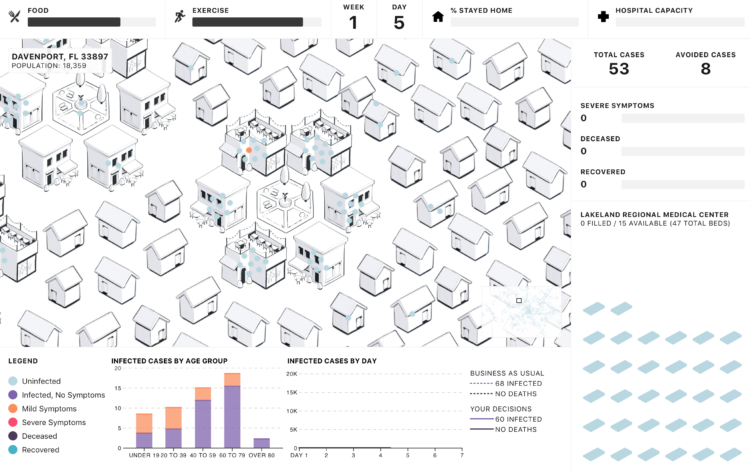

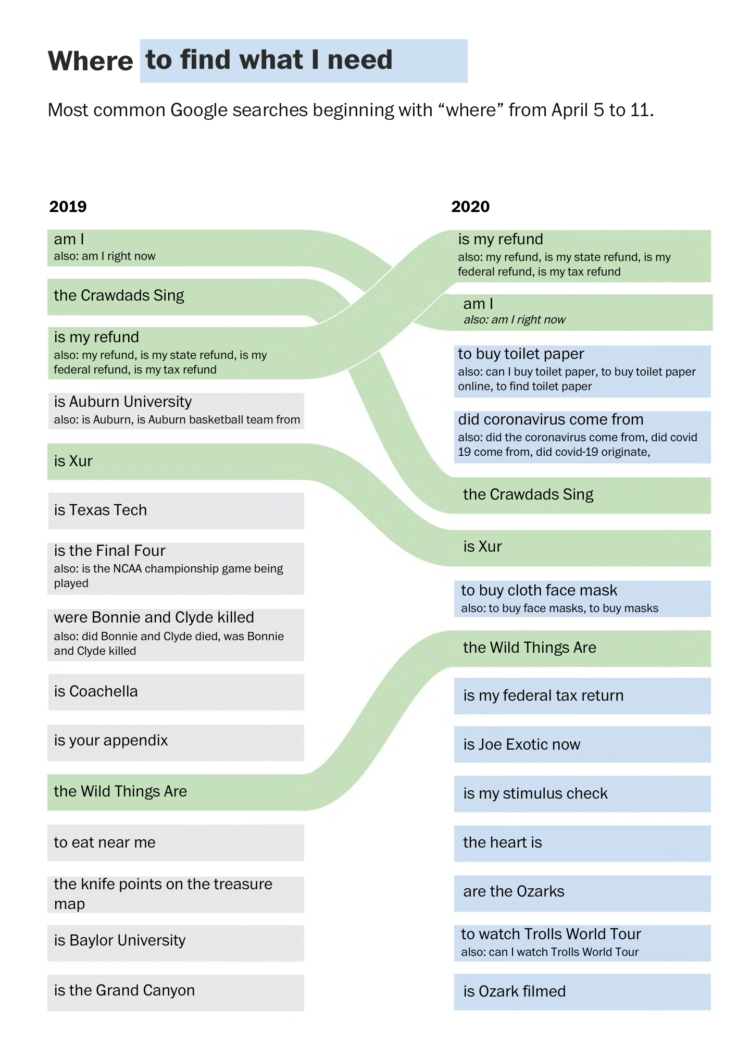


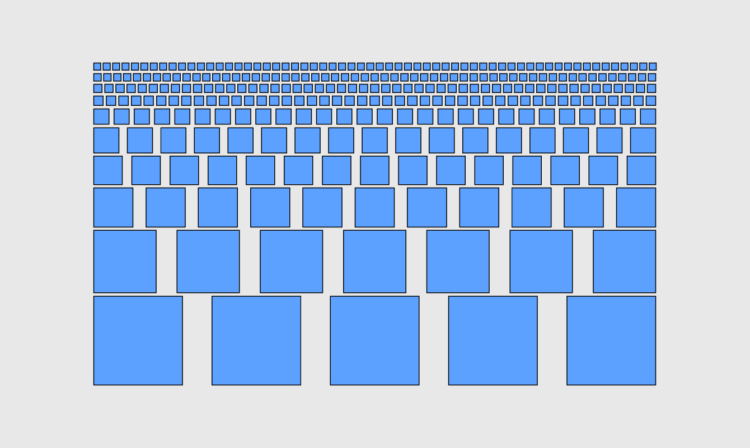
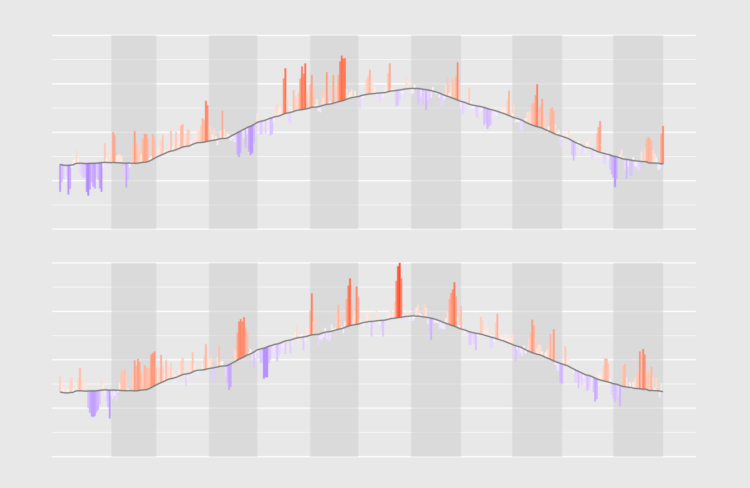
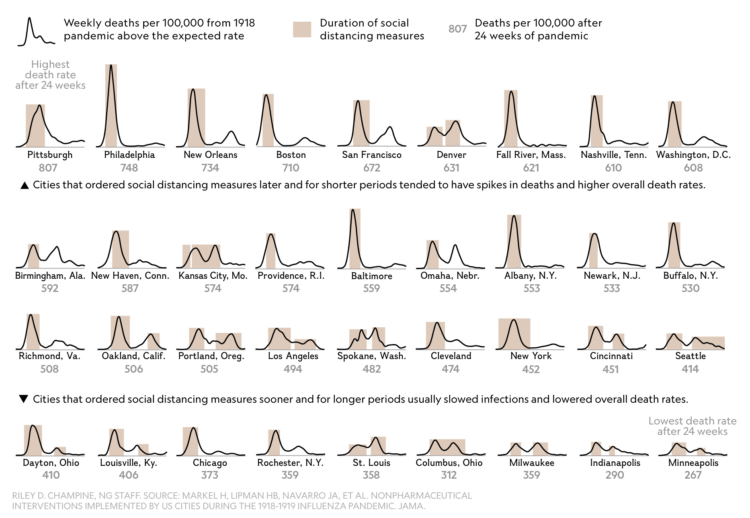
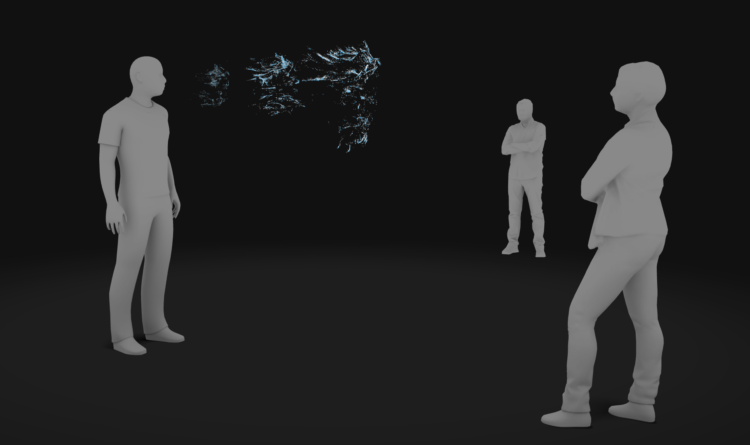

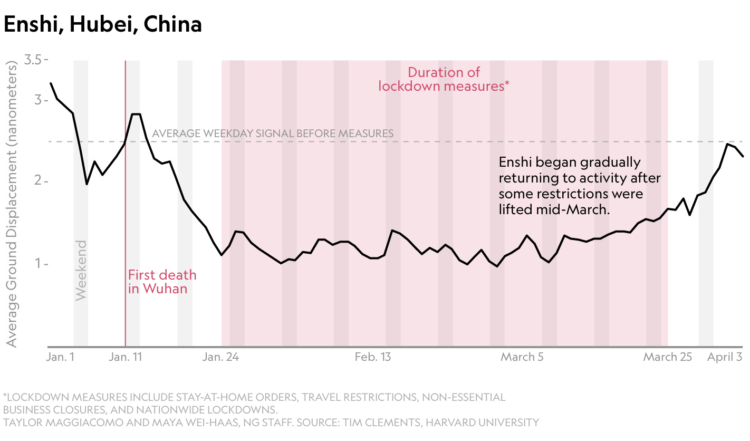
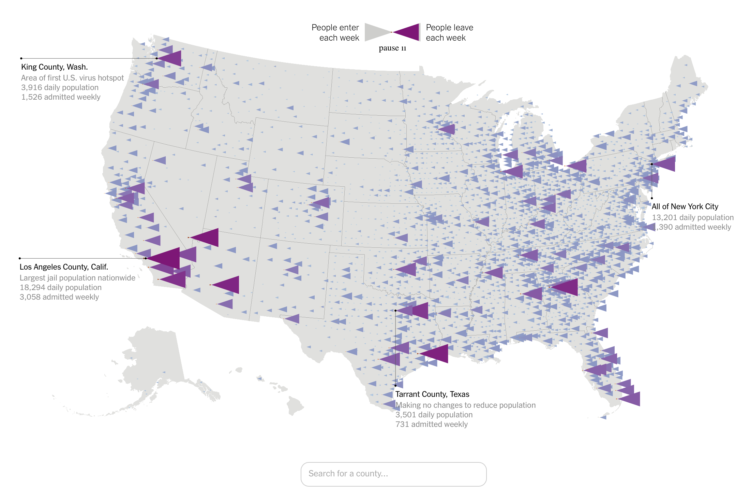
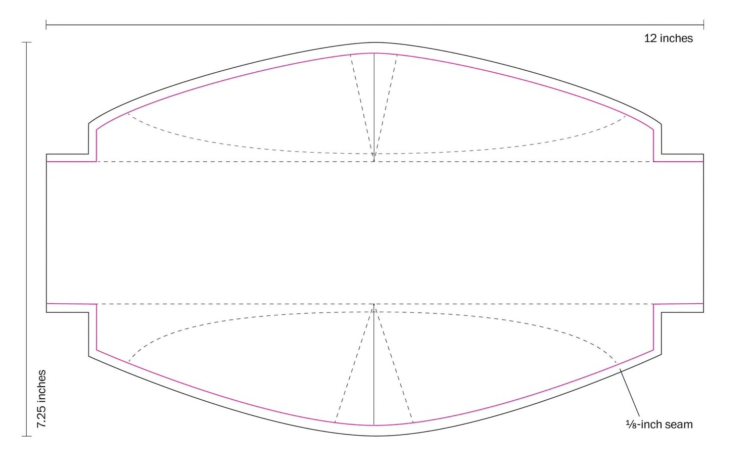

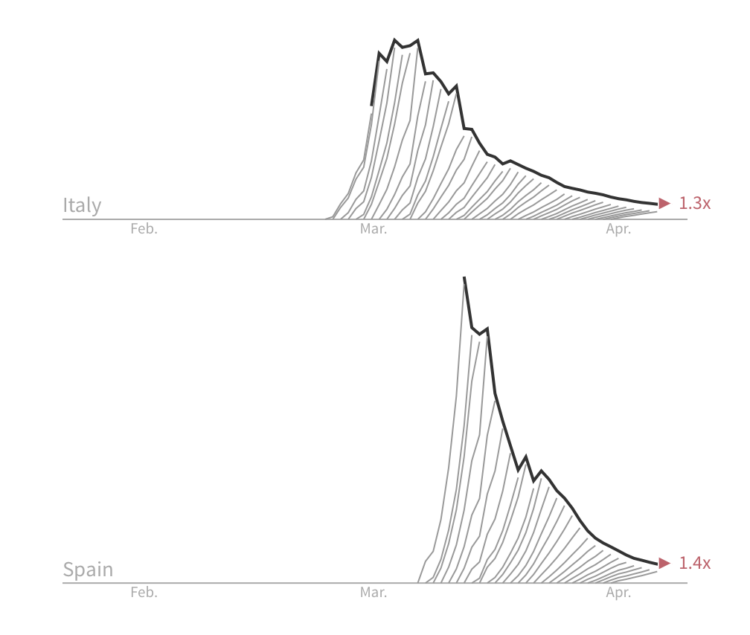
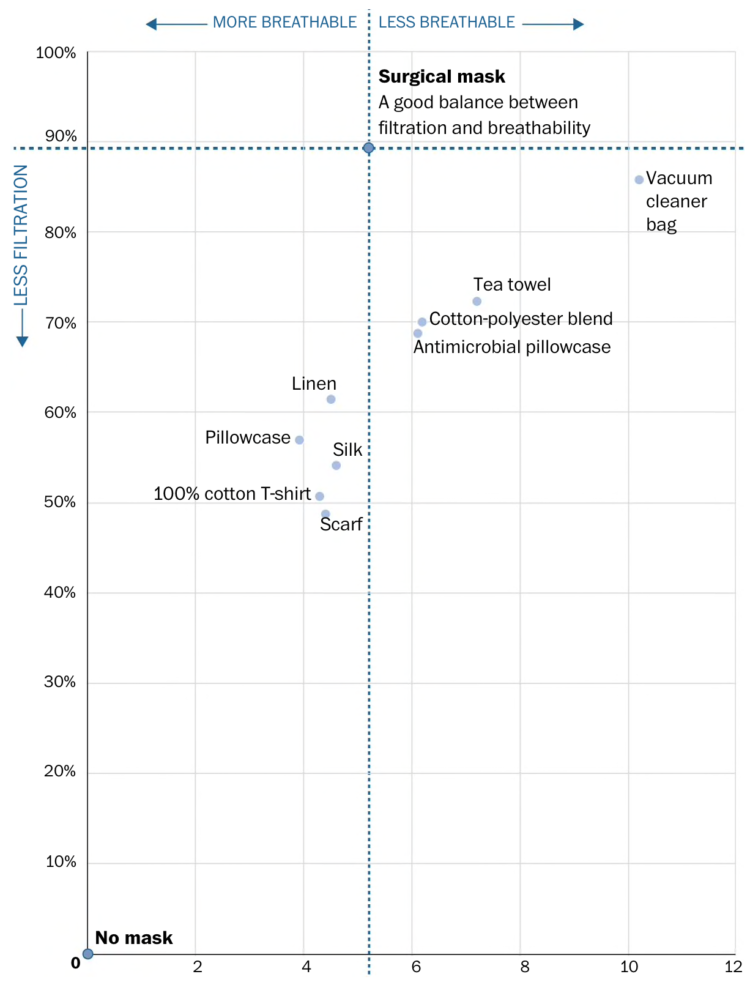










 Visualize This: The FlowingData Guide to Design, Visualization, and Statistics
Visualize This: The FlowingData Guide to Design, Visualization, and Statistics
